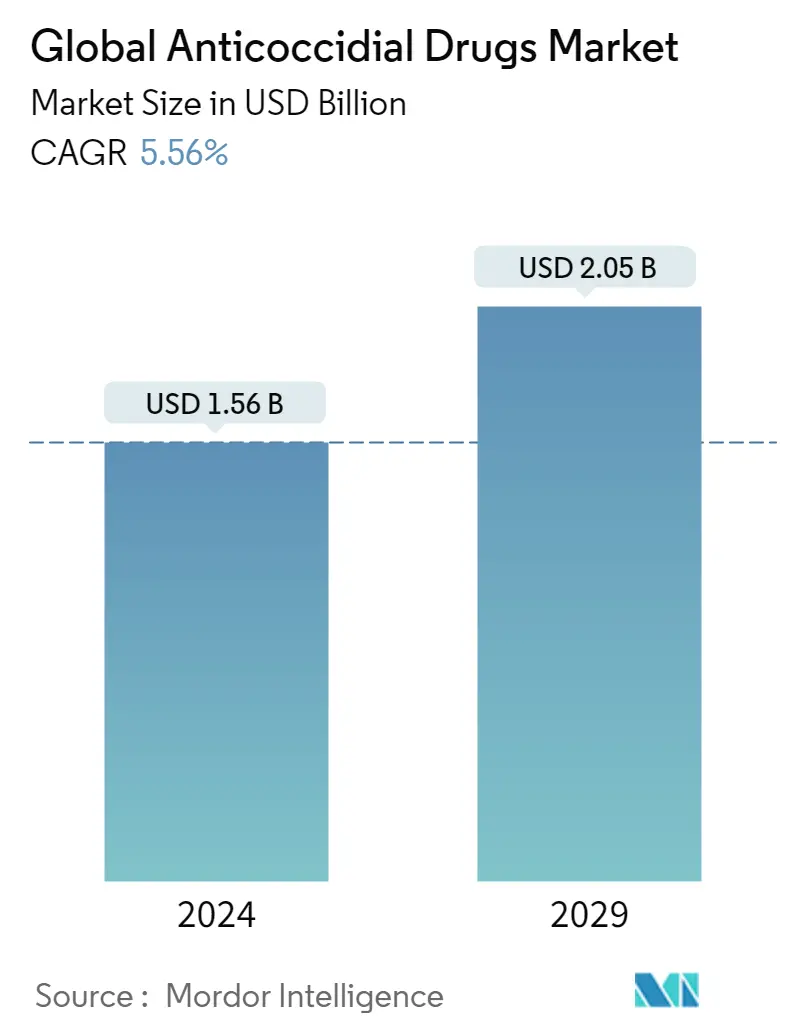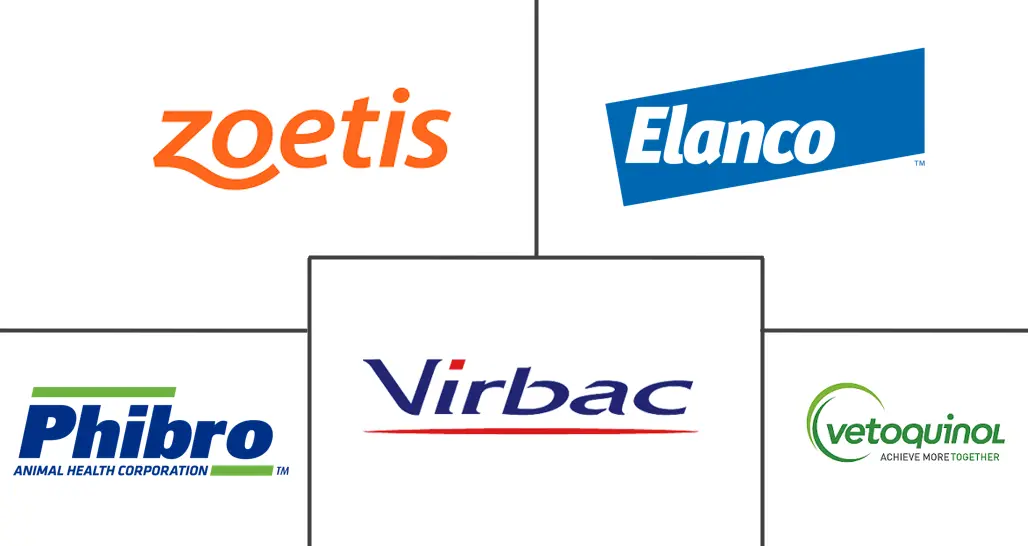Market Size of Global Anticoccidial Drugs Industry

| Study Period | 2019 - 2029 |
| Market Size (2024) | USD 1.56 Billion |
| Market Size (2029) | USD 2.05 Billion |
| CAGR (2024 - 2029) | 5.56 % |
| Fastest Growing Market | Asia-Pacific |
| Largest Market | North America |
Major Players
*Disclaimer: Major Players sorted in no particular order |
Need a report that reflects how COVID-19 has impacted this market and its growth?
Anticoccidial Drugs Market Analysis
The Global Anticoccidial Drugs Market size is estimated at USD 1.56 billion in 2024, and is expected to reach USD 2.05 billion by 2029, growing at a CAGR of 5.56% during the forecast period (2024-2029).
Due to the COVID-19 outbreak, a short-term negative impact was seen on the market due to decreased visits to veterinary hospitals and clinics. Healthcare services were significantly reduced due to social distancing measures taken by governments across the globe. According to a February 2021 article published in Frontiers in Veterinary Science, dog owners also feared the COVID-19 infection and its spread, leading to fewer disease diagnoses for pets. Additionally, the study above also indicated that, like many other professions, veterinarians were significantly impacted by the onset of COVID-19 in the initial phase of the pandemic. However, the pandemic drove pet owners to email, text, and even video call veterinarians on a scale never seen before. The number of veterinarians offering digital or remote consultations increased by 20% as a result of the pandemic, with almost half of the veterinarians (47%) offering online services. This surge in interest and demand for online veterinary services is rapidly changing the pet care landscape.
A significant burden of coccidiosis in animals across the globe is expected to boost the market. Coccidiosis is one of the most severe enteric problems in the poultry industry. The most catastrophic Eimeria tenella outbreaks occurred in the early stages of intensive chicken farming. The coccidia species Eimeria tenella produces severe hemorrhages and hypovolemic shock, both of which are fatal for the infected bird. However, subclinical coccidiosis is responsible for an even greater proportion of production losses caused by damage to intestinal cells which further leads to decreased body weights, increased feed conversion rates, a lack of flock uniformity, difficulties with skin pigmentation, and, in the end, mortality.
Moreover, Eimeria is a genus of apicomplexan parasites that includes various species capable of causing the disease coccidiosis in animals such as cattle, poultry, dogs, cats, and smaller ruminants, including sheep and goats. According to a research article published in August 2022 by Anthony Andrew, nearly 20 or more Eimeria species have been identified in cattle feces worldwide. According to the article, clinical infection usually begins at 1-2 months of age because coccidiosis rarely manifests in the first three weeks of life. Thus, the burden of coccidiosis among the target animals of a specific age demands the availability of the anticoccidial drugs. As a result, market growth is expected during the analysis period.
A significant rise in the adoption of pet animals, including dogs, cats, and even horses, as companions of human beings, has been observed over recent years. Furthermore, farm animals such as cattle and swine are being taken in for a variety of commercial reasons. Because of their promising economic conditions, industrialized economies account for a disproportionately significant share of animal ownership. For instance, according to the 2022 published data by the Pet Food Manufacturers Association (United Kingdom), 17.4 million or 62% households in the United Kingdom owned pets in 2022. As the pet owners are more concerned and aware of the safety of their pets, this is likely to create demand for preventive and curative advanced therapeutic products, thereby boosting the market growth.
While these factors are expected to propel the growth of the studied market over the forecast period, the availability of alternative treatment methods in the market is anticipated to hamper the market growth.
